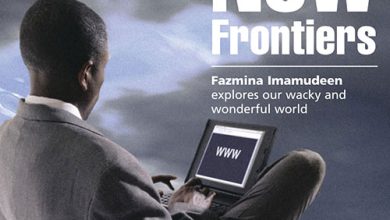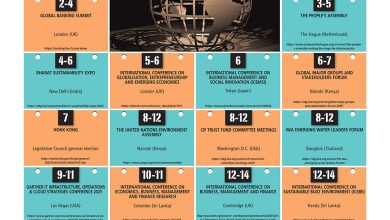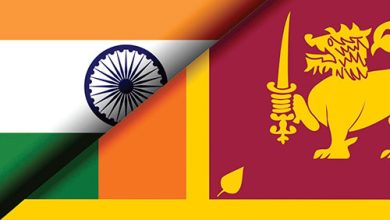THE WAR IN UKRAINE
VLADIMIR PUTIN IS A NIGHT MARE FOR NATO
Saro Thiruppathy discusses Russia’s annexation of four regions in Ukraine as part of Moscow’s aim to protect its borders and gain economically
Russian President Vladimir Putin is a man that the West loves to hate. But it doesn’t seem as if members of NATO genuinely like Ukrainian President Volodymyr Zelensky either. After all, a friend would never have urged the former comedian to provoke a conflict with a man who is experienced in warfare, understands strategic intelligence and has a passion to reunite the fragmented USSR.
NATO used Ukraine’s desire to join its elite membership as a carrot to encourage Zelensky to believe that his country would be able to withstand the Russian juggernaut and emerge unscathed. And then the organisation went on to predict that Russia would invade Ukraine.
Eventually, Putin obliged – and his army entered Ukraine on 24 February after he declared the effort to be a “special military operation” for the “demilitarisation and denazification” of Russia’s neighbour.
NATO MEMBERSHIP Moscow’s biggest concern with Ukraine gaining membership of the North Atlantic Treaty Organization was that it would give NATO troops the right to occupy the long common border, which the two countries share.
Since this would constitute an existential threat to Russia, Putin was not willing to take any chances.
In the early days of the war, the Europeans and Americans formed the hurrah squad that cheered Zelensky’s bravery to take on the Russian bear. But his troops weren’t prepared with the necessary hardware or the required mindset to fight the Russians.
UKRAINE EXODUS As a result, huge numbers of Ukrainians fled to neighbouring European countries, and some took flight to the UK and elsewhere. According to UNICEF, 10.3 million Ukrainians had sought refuge in Europe by early August.
Most Ukrainian men bravely stayed behind to take on the Russians while mercenaries from the West arrived in droves to fight against Moscow and communism. But it was an uphill battle and slowly but surely, a number of towns and cities fell to the Russian onslaught.
Recently, Putin ordered the takeover of a nuclear power plant located in Zaporizhzhia – one of the four regions that he annexed in September. The other three regions include Luhansk, Donetsk and Kherson.
ANNEXATION The annexation of these four oblasts that border the eastern flank of Ukraine took place after referendums were held in those areas. While 98 percent in Donetsk and Luhansk voted to join Russia, 93 percent in Zaporizhzhia and 83 percent in the Kherson region also opted to become a part of Russia.
As expected, the West called the referendum a sham and denounced the process. But being made of sterner stuff, Putin went ahead and signed annexation agreements on 30 September with the pro-Russian leaders of the four oblasts.
Until Russia invaded Crimea on 20 February 2014, Ukraine had administered the region as the Autonomous Republic of Crimea. After 96.7 percent of the region’s citizens voted to join Russia, the Treaty on the Adoption of the Republic of Crimea to Russia was signed on 18 March 2014.
Indeed, the West was furious at that time too; it denounced the referendum and called the annexation an illegal land grab.
The map of Ukraine now shows that the recently annexed oblasts together with the Crimean Peninsula that borders the Black Sea and the Sea of Azov form a corridor of Russian occupation in the east of the country. Zaporizhzhia, Luhansk, Donetsk and Kherson make up about 90,000 square kilometres (15%) of Ukrainian territory.
But it’s evident that Moscow didn’t annex the four regions simply because it loves the residents. While huge investments will be needed to restore these regions, there are enormous economic benefits to be gained too.
The Donetsk region was Ukraine’s industrial centre until 2014 and accounted for 20 percent of the country’s industrial production. Donetsk, which is rich in mineral resources, has the fourth largest coal field in Europe.
Luhansk is famous for its metallurgy, machinery and agriculture sectors. In addition, it’s also home to various metallurgical enterprises, chemical and pharmaceutical plants, and many coal mines.
The Zaporizhzhia region produces a quarter of Ukraine’s electricity supply and is also at the core of the country’s energy supply.
In addition to the nuclear power plant, which is the largest facility in Europe, the region is home to the Dnieper Hydroelectric Station and Botievo wind farm too.
There are also many large industrial and mechanical engineering facilities in Zaporizhzhia.
And the region of Kherson is recgnised for its shipbuilding capacity, resorts and agriculture.
Russia now controls the entire Sea of Azov and part of the Black Sea, which is its economic gateway to markets in southern Europe.
Analysts claim that because of Russia’s declining population, this annexation will help increase its demography since there are about nine million people living in the four oblasts.
The invasion and annexation of Crimea in 2014, and the four Ukrainian regions in 2022, is amounting to quite a victory for the ambitious Russian president – thus far…







